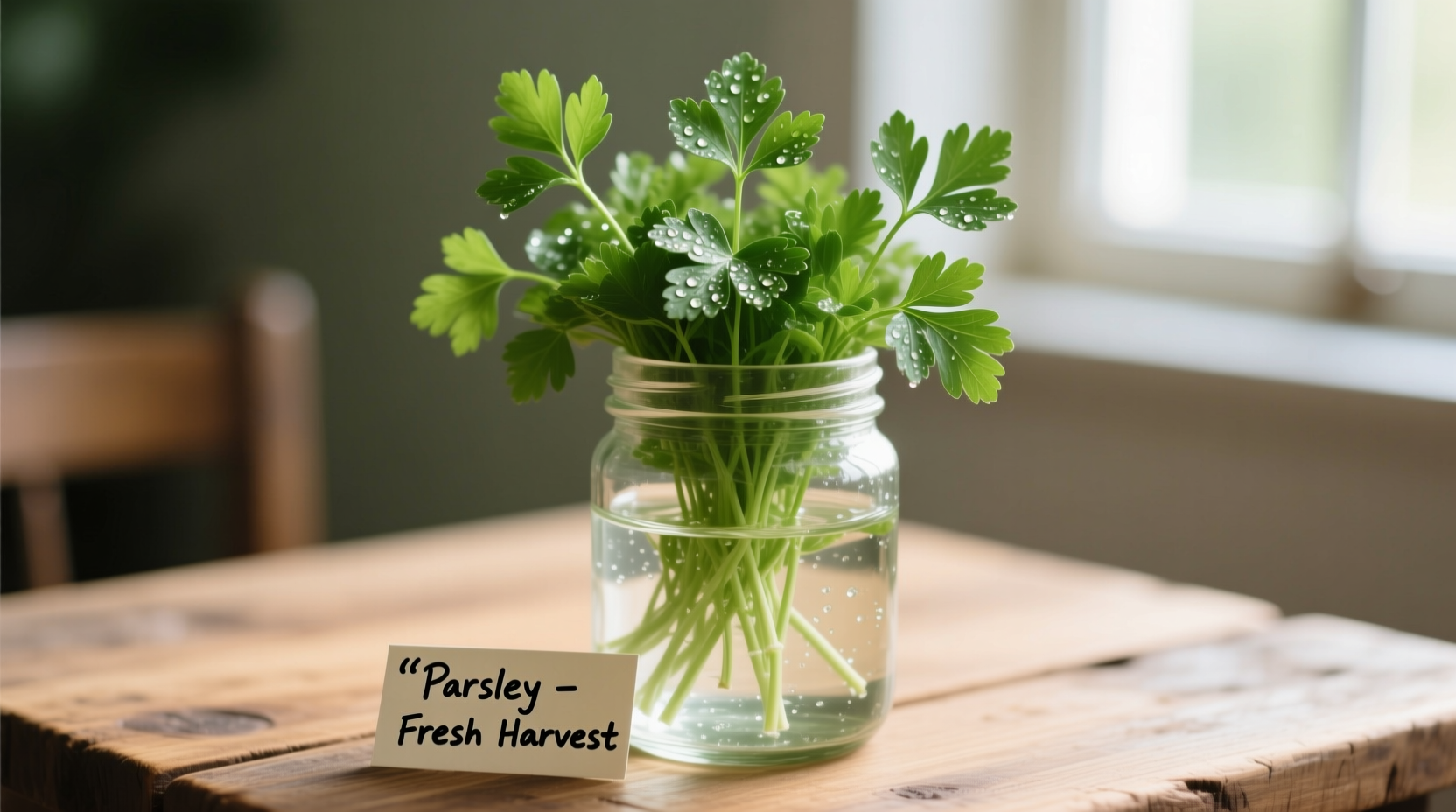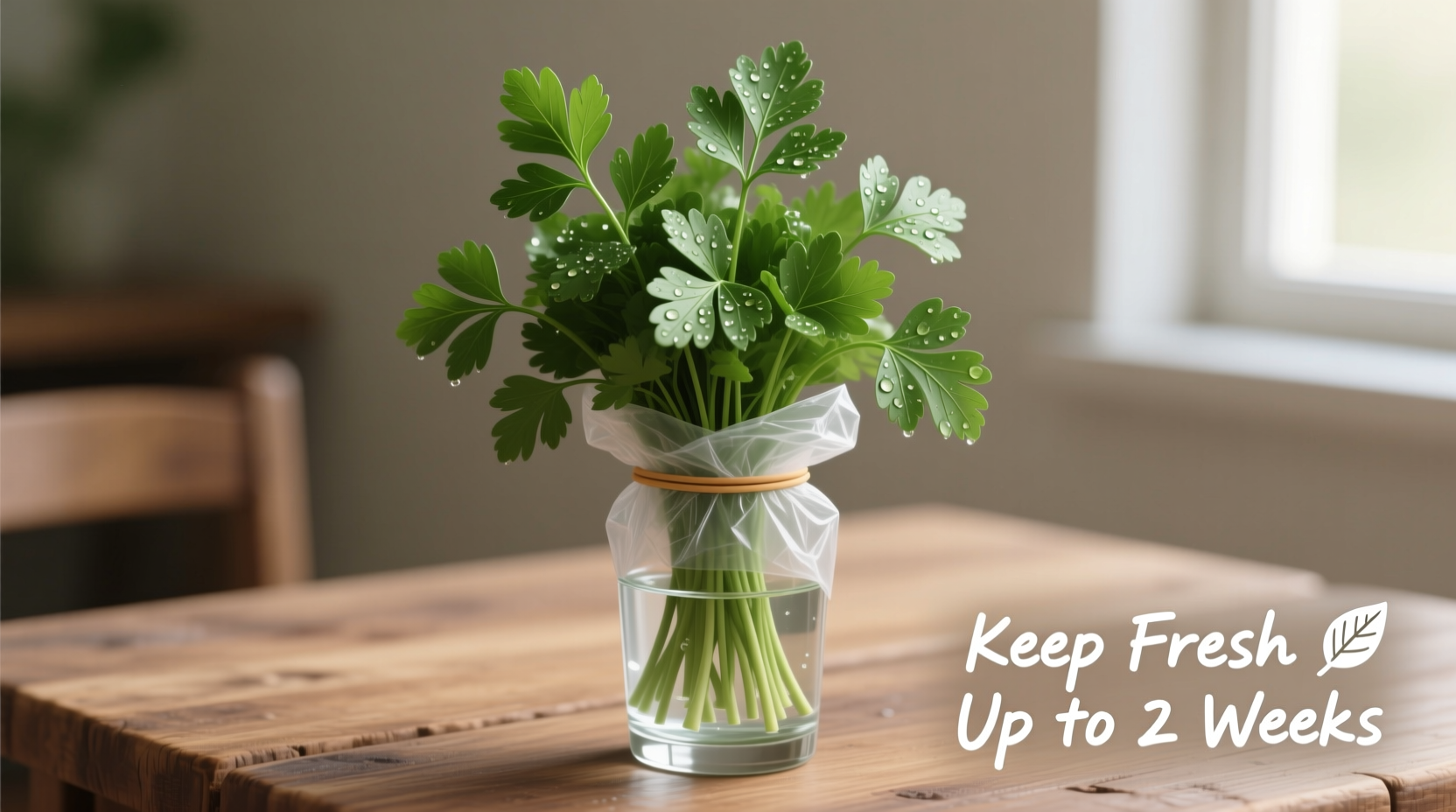Nothing ruins a dish faster than wilted, yellowing parsley. As a culinary professional who's worked in Michelin-starred kitchens and taught thousands of home cooks, I've seen how proper herb storage transforms cooking results. Most people toss their parsley straight into the fridge without preparation, dooming it to a sad, soggy fate within days. But with the right technique, you can extend your fresh parsley's life by up to two weeks while preserving its bright flavor and crisp texture.
The Science Behind Parsley Preservation
Parsley wilts quickly because it loses moisture and reacts to ethylene gas produced by other produce. Unlike delicate herbs like cilantro, parsley has tougher stems that respond well to water-based storage methods. The ideal conditions for parsley storage are 32-36°F (0-2°C) with 90-95% humidity—exactly what your refrigerator's crisper drawer provides when properly set up. University of California's Postharvest Technology Center confirms that maintaining proper moisture balance is critical for leafy herbs like parsley (UC Davis Postharvest).
Immediate Storage for Next-Day Use
If you'll use your parsley within 24-48 hours, the countertop method works best:
- Trim ½ inch from the bottom of stems
- Place in a glass with 1-2 inches of cool water
- Loosely cover with a plastic bag
- Keep away from direct sunlight
This mimics how florists keep cut flowers fresh. The water replenishes moisture while the bag creates a mini-humid environment. Change the water daily for best results.

Refrigerator Storage for 1-2 Week Freshness
For longer storage, your refrigerator is essential. The paper towel method consistently delivers the best results:
- Wash and thoroughly dry parsley (moisture causes rot)
- Trim stem ends by ¼ inch
- Stand upright in a glass with ½ inch of water
- Wrap loosely with a slightly damp paper towel
- Place a plastic produce bag over the top
- Store in the main compartment of your refrigerator
This technique maintains optimal humidity while preventing excess moisture buildup. The USDA Food Safety and Inspection Service recommends storing herbs away from ethylene-producing fruits like apples and bananas to prevent premature wilting (USDA Food Safety).
Long-Term Preservation Options
When you have more parsley than you can use immediately, these methods extend its life significantly:
| Method | Preparation Time | Storage Duration | Best For |
|---|---|---|---|
| Water + Bag (Refrigerator) | 5 minutes | 10-14 days | Daily cooking needs |
| Freeze in Oil Cubes | 15 minutes | 6 months | Sauces and cooked dishes |
| Dry in Bundles | 2 minutes + drying time | 1-2 months | Seasoning blends |
Troubleshooting Common Storage Issues
Problem: Parsley turns yellow quickly
Solution: You're likely storing it near ethylene-producing fruits. Move to a separate drawer away from apples, bananas, and avocados.
Problem: Slimy stems develop
Solution: Excess moisture is the culprit. Ensure stems are completely dry before storage and change water every 2-3 days.
Problem: Parsley loses flavor rapidly
Solution: You're probably using the wrong part. The stems contain more flavor compounds than leaves—chop finely and use in cooking for maximum impact.
Reviving Wilted Parsley
Don't toss slightly limp parsley just yet. Submerge it in ice water for 15-20 minutes—this rehydrates the cells through osmosis. The cold temperature causes the cells to absorb water, restoring crispness. This technique works best when parsley hasn't completely turned yellow or slimy.
When to Discard Parsley
While proper storage extends parsley's life, it won't last forever. Discard when you notice:
- Significant yellow or brown discoloration
- Slippery or slimy texture
- Mushy stems that bend easily
- Foul or sour odor
Fresh parsley should have a clean, grassy aroma and crisp snap when bent. If it doesn't meet these criteria, it's time to replace it.











 浙公网安备
33010002000092号
浙公网安备
33010002000092号 浙B2-20120091-4
浙B2-20120091-4